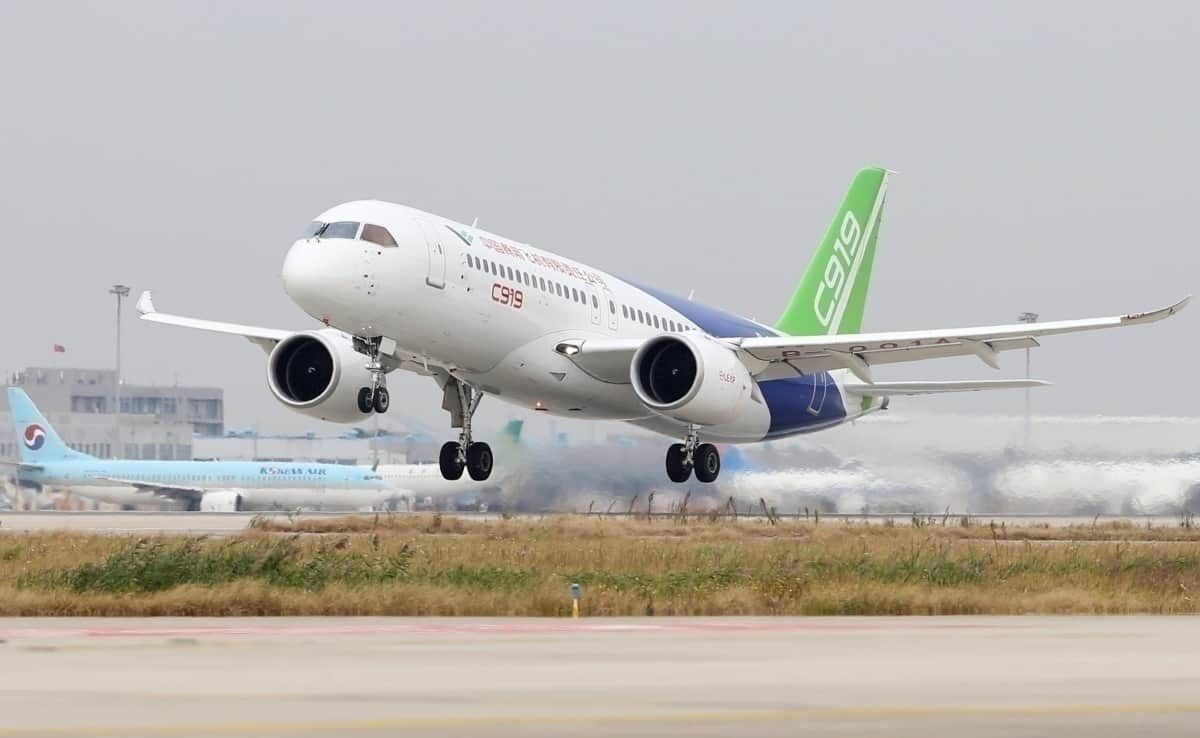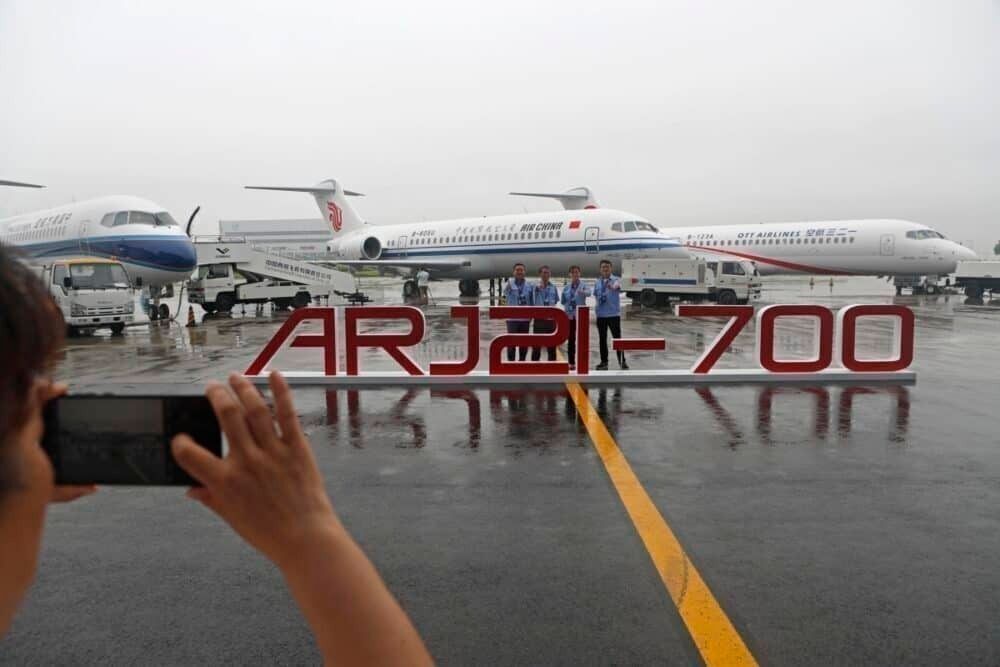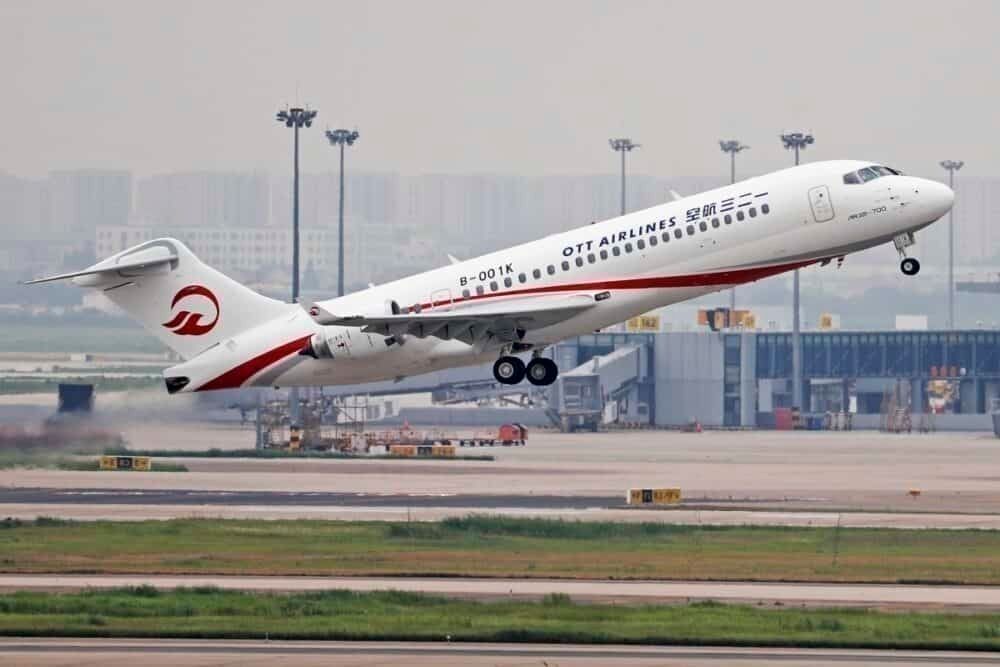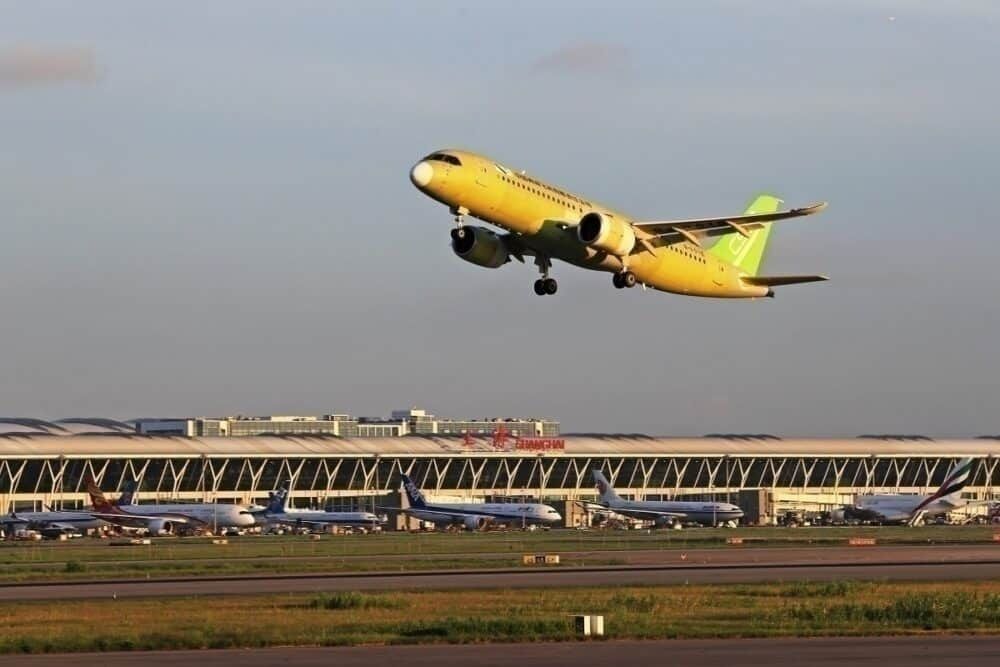Boeing and Airbus have led the large commercial aircraft market for decades. This may be set to change with the development of Russian and Chinese built planes. COMAC is a leading company here, developing aircraft from regional jets up to larger widebodies. It is early days for COMAC and Chinese aviation, but its narrowbody competitor to the 737 and A320, the C919, is almost ready to start service with airlines.
COMAC - starting the development of Chinese aircraft
China took a big step forward in the aircraft manufacturing business in 2008 with the formation of COMAC (the Commercial Aircraft Corporation of China). COMAC is a state-owned company, incorporated and producing aircraft in Shanghai.
It brought together several smaller manufacturing and aeronautical companies across China, with a mission to manufacture large civilian jet aircraft. Such development is part of China's long term development goals, incorporated in its "Five Year" and its "Made in China 2025" strategic plans.
COMAC started with smaller aircraft development. The ARJ21, a 90-seat regional jet, first flew in 2008 and entered service in 2016 with Chengdu Airlines. This is in the same market as the Airbus A220 and Embraer aircraft such as the E190. It has sold mostly to Chinese airlines, with regional airlines first and later the larger national airlines.
The C919 - deliveries in 2021?
COMAC launched a narrowbody program in 2008 and started the development of the C919 in 2011. This is designed to take on Boeing and Airbus, with specifications similar to the Boeing 737 and the Airbus A320.
As with many things in China, the name carries some significance. The '9' represents longevity in Chinese culture. It is pronounced 'jiu' which is the same pronunciation as the word for 'everlasting (such wordplay is common in Chinese). The '19' refers to its maximum capacity of 190.
As of October 2020, six test aircraft have been built, and the first airline delivery is expected in 2021. The launch customer will be China Eastern Airlines. It will operate it under a new subsidiary, OTT Airlines, which will operate just Chinese built aircraft.
Development and deliveries have already been delayed. There have been several technical problems as part of test flights. And the engines also caused delays. The US government considering blocking a deal with General Electric, but this was resolved in April 2020, and the C919 will use GE LEAP-1C engines.
Stay informed: Sign up for our daily aviation news digest.
Taking on Boeing and Airbus
The C919 will offer a typical capacity of 168 (in a single class configuration, but with a maximum limit of 190), with a range of 4,075 kilometers. There will also be an extended range that increases this to 5,555 kilometers. Engines have been confirmed as General Electric LEAP-1C engines, the same as used by the A320neo and all 737 MAX aircraft.
This is a comparable specification to the 737 Next Generation and 737 MAX series, as well as the A320neo. Passenger capacity is similar to the mid-range version, but both Airbus and Boeing offer a higher capacity variant that COMAC will not.
The range, on the other hand, is more of a limitation. The CR919 has a range of 4,075 kilometers, compared to 5,436 kilometers for the 737-800 and 6,500 kilometers for the A320neo. The C919 has been designed primarily for domestic Chinese use, and its specifications match this. This may not be so much of a concern for Chinese airlines but will limit its use on international (or even US transcontinental) services.
Orders from Chinese airlines
According to COMAC, it has (as of September 2020) received 815 orders from 28 orders. It is believed these are all Chinese airlines, with just one order from leasing company GE Capital (for 10 aircraft with 10 further options).
The three largest airlines Air China, China Eastern, and China Southern, have made the same initial order (for five aircraft with 15 more options). Other Chinese airline customers include Hainan Airlines, Sichuan Airlines, Joy Air, and Hebei Airlines. There are also large orders from Chinese leasing companies, many of them subsidiary companies of the Chinese banks.
A big test for the C919 is whether it will see service with non-Chinese airlines. There is potential, especially with Southeast Asian or African airlines. Trading relationships are strong between China and many countries. And if it is offered at a lower price than Airbus and Boeing aircraft, it could be appealing (prices are hard to attain, but analysis by CNET suggests pricing could be around half that of Airbus and Boeing).
China offers the second-largest aviation market globally (according to IATA for 2019). Even if it never expands beyond this, it is a large market (and aided by state-owned links).
Scott Kennedy, a senior adviser at the Center for Strategic and International Studies in Washington, explains his view in reporting by CNET. He says:
"They've decided to spend as much as needed and take as long as necessary until they have their own plane that can rival Boeing and Airbus. The political ambition from the top leaders is that China has its own aircraft because, in their mind, great nations have their own airliners."
Time will tell how far the C919 will spread. Regulatory hurdles are also an issue. As yet, there is no certification from the US FAA, for example. Indeed, the next few years will see sales in China and potential nearby Asian markets. But looking forward over a decade, and as COMAC's ability grows, the landscape could look very different.
What do you think about China's aviation ambitions and the prospects for the C919? Will it remain a Chinese operated aircraft, or will we see it take on Boeing and Airbus in other markets? Let us know your thoughts in the comments.




